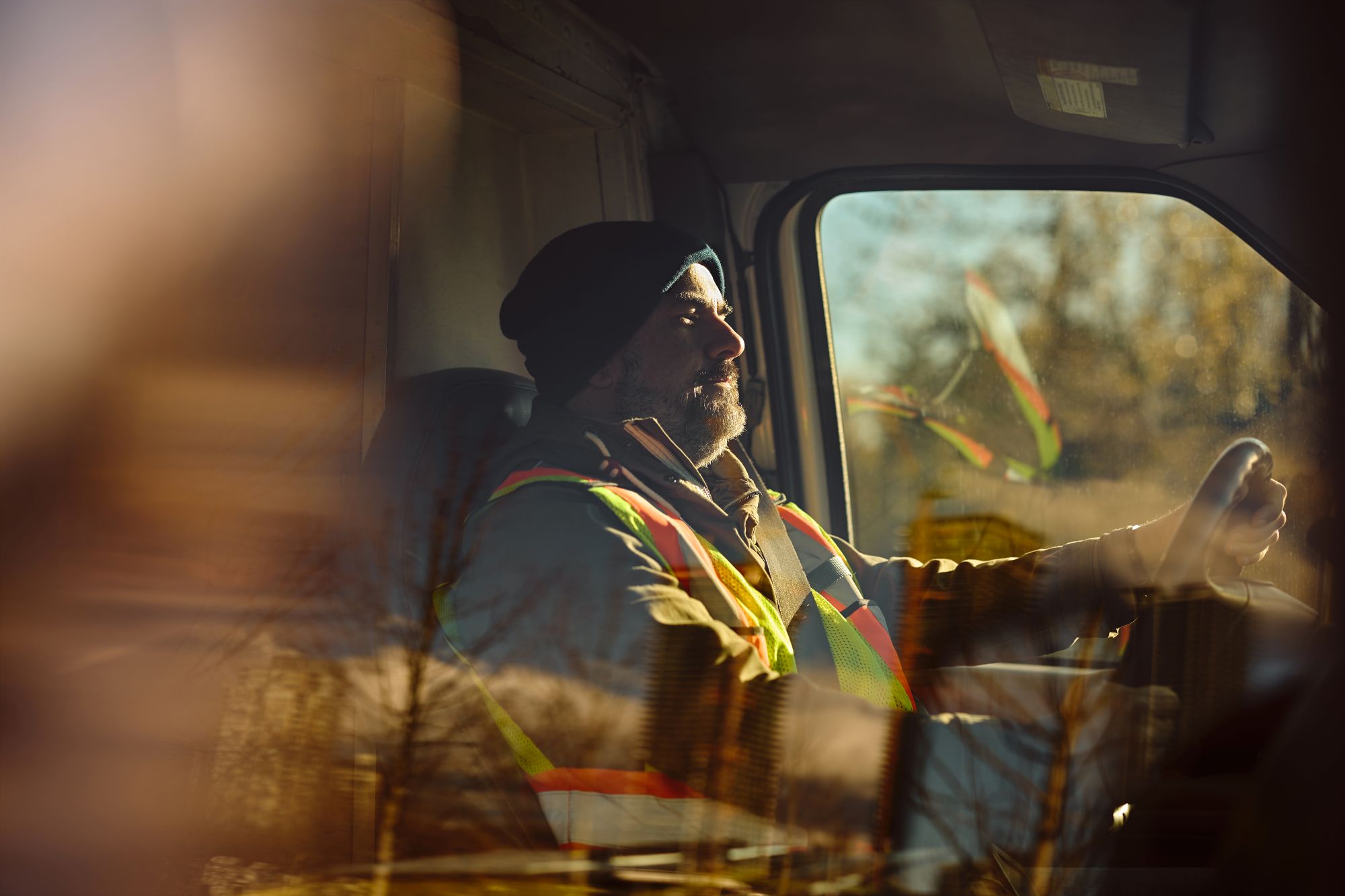
Guest
O boom das infra-estruturas na Roménia - O que significa para o sector da mobilidade
Criado: 22/09/2025
•
Atualizado: 22/09/2025
A Roménia está a emergir rapidamente como um centro estratégico de logística e transporte de mercadorias no Sudeste da Europa. Apoiado por milhares de milhões de euros de financiamento nacional e da UE, o renascimento das infra-estruturas do país está a atrair operadores de frotas, investidores em logística e fabricantes. Neste artigo, exploramos o que estes desenvolvimentos significam para as frotas, os condutores e o sector dos transportes em geral.
As infra-estruturas de transportes da Roménia sofreram uma mudança radical em termos de ritmo e de escala. O Governo reservou cerca de 25 mil milhões de lei (4,27 mil milhões de libras) para projectos rodoviários em 2026, o que reflecte uma concentração sem precedentes nas auto-estradas e nos corredores de transporte de mercadorias.
Em meados de 2025, a Roménia tinha cerca de 1 325 km de autoestradas em serviço (1 188 km de autoestradas e 138 km de vias rápidas), com mais 741 km em construção e 669 km em fase de concurso.
Até 2030, a Roménia planeia duplicar a sua rede de auto-estradas, modernizar as rotas ferroviárias estratégicas, expandir os transportes urbanos e ligar regiões há muito isoladas. O desafio é imenso, mas o resultado poderá transformar a posição do país no mapa dos transportes da Europa.
Os principais projectos incluem o eixo norte-sul da A7, que vai de Ploiești a Siret, que ajudará no transporte para a fronteira ucraniana, e que deverá estar concluído em 2026. Outro projeto é uma via rápida de 11 km que liga Satu Mare à fronteira da Roménia com a Hungria. A circular A0 de Bucareste facilitará o tráfego de mercadorias e passageiros em torno da capital, estando a metade sul já a ser utilizada. Outras obras importantes incluem os corredores Suceava-Oar e Timișoara-Moravița, bem como o túnel Meseș de 2,9 km, que se tornará o túnel rodoviário mais longo da Roménia.
"Estes corredores não só melhorarão as ligações Este-Oeste e Norte-Sul, como também ligarão regiões anteriormente isoladas, como a Moldávia e o Nordeste, ao resto do país e à UE", comenta Eduard Ularu, Diretor de Desenvolvimento Empresarial da SNAP.
Mas as infra-estruturas não são apenas estradas. A ponte de Brăila sobre o Danúbio, inaugurada em julho de 2023 com um custo de 500 milhões de euros (363 milhões de euros cofinanciados pela UE), proporciona a primeira travessia sobre o Danúbio marítimo e melhora significativamente a conetividade com Constança e Dobruja.
Outros desenvolvimentos vitais incluem as melhorias ferroviárias planeadas para o porto de Constança e a expansão de 130 milhões de euros da capacidade de contentores e ro-ro da DP World Romania, duplicando o rendimento e acrescentando ligações logísticas por estrada e caminho de ferro.
Porque é importante
O mercado de transporte de mercadorias e logística da Roménia é considerável. Avaliado em aproximadamente 21,11 mil milhões de USD em 2025, prevê-se que aumente para 24,27 mil milhões de USD em 2030. Entretanto, só o segmento do transporte rodoviário de mercadorias está projetado em 9,07 mil milhões de USD em 2025, subindo para 10,37 mil milhões de USD em 2030.
Estes números reflectem o papel crescente da Roménia como corredor transeuropeu, servindo rotas da Hungria, Bulgária, Ucrânia, Moldávia e portos do Mar Negro. A Ucrânia dirige agora grande parte das suas [exportações de cereais através de Constança] (https://breakbulk.news/romanias-government-approves-railroad-upgrades-for-constanta-port/), na costa do Mar Negro, e espera duplicar de 2 milhões para 4 milhões de toneladas por mês através das infra-estruturas romenas.
"Estes investimentos ajudarão a Roménia a competir mais fortemente com os principais centros logísticos, como os da Polónia e da Grécia", comenta Eduard Ularu. "Constanța tem um enorme potencial e, com as infra-estruturas adequadas, pode finalmente tornar-se a porta de entrada para o comércio europeu que estava destinada a ser."
A melhoria da armazenagem, a redução dos custos de mão de obra e as tendências de "friend-shoring" estão a incentivar ainda mais os fabricantes e retalhistas a localizarem centros logísticos na Roménia, aumentando a procura nas estradas e impulsionando o crescimento em toda a rede.

Desenvolvimentos digitais
As actualizações das infra-estruturas não são apenas físicas - são também digitais. À medida que o país expande as suas auto-estradas e corredores de transporte de mercadorias, está a incorporar sistemas inteligentes concebidos para permitir viagens mais rápidas, mais seguras e mais eficientes.
Em toda a rede, estão a ser instaladas [ferramentas inteligentes de monitorização do tráfego] (https://www.itf-oecd.org/sites/default/files/docs/smart-use-roads_1.pdf), incluindo sensores de peso-em-movimento, circuitos indutivos de tráfego e câmaras na berma da estrada. Estes sistemas serão alimentados por centros de controlo de tráfego em tempo real em cidades como Bucareste, Brașov e Timișoara, ajudando as autoridades - e os operadores de frotas - a responder mais rapidamente a incidentes e congestionamentos.
Bucareste está também a [modernizar a sua infraestrutura de semáforos] (https://urban-mobility-observatory.transport.ec.europa.eu/news-events/news/bucharest-continues-make-its-traffic-light-system-smarter-2023-02-27_en), utilizando a IA e detectores inteligentes para otimizar os fluxos de veículos e reduzir os estrangulamentos. Isto tem implicações importantes para os operadores de transporte de mercadorias que navegam em zonas urbanas densas, melhorando a fiabilidade do tempo de viagem e reduzindo os tempos de paragem.
A nível nacional, a Roménia está a mudar para [tarifação rodoviária digital] (hhttps://business-review.eu/business/transport-and-logistics/eltra-logis-the-new-tollro-road-charging-system-can-be-a-catalyst-for-fleet-renewal-285636). O novo sistema TollRO - cujo lançamento está previsto para 2026 - substituirá a atual vinheta eletrónica por um modelo de portagem baseado na distância e sensível às emissões, em conformidade com as diretivas da UE. Esta alteração poderá incentivar frotas mais limpas e oferecer preços mais justos aos operadores logísticos que invistam em veículos com baixas emissões.
Para os condutores, isto significa menos atrasos, informações mais claras em tempo real e condições de estrada mais reactivas. Para os operadores, é uma oportunidade de preparar o planeamento da frota, a gestão de rotas e as estratégias de sustentabilidade para o futuro.
Impactos para frotas e condutores
Para as frotas e os condutores, a modernização da Roménia traz benefícios e contrapartidas. Talvez o mais importante seja o facto de resultar numa maior eficiência da rede. Com rotas mais suaves e corredores mais rápidos, é provável que os investimentos reduzam os tempos de deslocação e os períodos de inatividade. As perigosas estradas nacionais de via única serão gradualmente substituídas por auto-estradas mais seguras e mais rápidas. Isto aumentará a produtividade e reduzirá também o tempo que os condutores passam ao volante.
No entanto, nem tudo é positivo. As obras em curso em auto-estradas como a A7 e a A8 podem causar atrasos e alterações de itinerário durante a realização das obras. Poderá também significar um maior volume de mercadorias (especialmente em Constança e nos postos fronteiriços), o que pode sobrecarregar as infra-estruturas existentes.
"Neste momento, zonas de construção como a DN2 e partes da circular A0 de Bucareste estão a causar desvios e estrangulamentos", explica Ularu. "Os camiões estão a perder horas em percursos que deveriam demorar minutos - e isso tem impacto em tudo, desde os orçamentos de combustível à fiabilidade das entregas."
Além disso, os novos corredores, as regras de segurança mais rigorosas e a alteração das taxas de utilização das estradas exigem uma maior atenção ao cumprimento.
Apoiar o bem-estar dos condutores durante a transição
Apesar dos ganhos em termos de infra-estruturas, os parques de estacionamento seguros e as instalações de bem-estar continuam a ser irregulares em alguns corredores de transporte de mercadorias, especialmente perto das zonas fronteiriças e dos principais centros de distribuição. As zonas de construção carecem frequentemente de zonas de paragem formais, deixando os condutores expostos e sem lugar para descansar.
"Continuamos a assistir a paragens perigosas e a paragens superlotadas nas principais rotas de transporte de mercadorias", afirma Eduard. "As auto-estradas modernas trarão áreas de serviço e de repouso dedicadas a cada 30-50 quilómetros, completas com estações de serviço, lojas e praças de alimentação. Para os condutores, isto significa locais mais seguros para estacionar, com iluminação adequada, vigilância CCTV e zonas de repouso seguras que reduzem o risco de roubo. Instalações sanitárias como duches e casas de banho limpas - uma raridade nas estradas nacionais - tornar-se-ão finalmente a norma."
A SNAP está a colmatar esta lacuna através do seu mapa de estacionamento interativo em toda a Roménia. Os condutores podem facilmente localizar estacionamento seguro e de confiança para camiões, reservar lugares com antecedência, quando disponíveis, e planear rotas mais seguras através do mapa SNAP.
Está a planear uma viagem pela Roménia? Utilize o mapa SNAP para encontrar estacionamento seguro e amigo do condutor ao longo das principais rotas de transporte de mercadorias.
O ângulo da sustentabilidade
Este processo de modernização das infra-estruturas também desempenha um papel fundamental na viabilização de uma logística mais ecológica. Com uma melhor fluidez do tráfego, haverá menos emissões causadas por veículos parados e pela condução "stop-start".
Haverá também melhorias nos corredores de transporte para apoiar as infra-estruturas emergentes de abastecimento de veículos eléctricos e de hidrogénio, reduzindo a dependência dos combustíveis fósseis.
Uma região em movimento
O investimento da Roménia em infra-estruturas marca uma mudança fundamental para o transporte de mercadorias e a mobilidade no Sudeste da Europa. Para as frotas, isto traduz-se em corredores mais rápidos, maior capacidade logística e maiores volumes de comércio, mas também num controlo mais rigoroso do bem-estar, da conformidade e da resiliência.
Como líder da indústria com visão de futuro, a SNAP defende operações bem informadas, planeamento flexível de rotas e ferramentas centradas no condutor que apoiam tanto a segurança como a eficiência. A Roménia não está apenas a modernizar-se - está a remodelar a forma como as mercadorias circulam na região.
"Não se trata apenas de estradas - trata-se de resiliência, sustentabilidade e de construir um futuro mais inteligente para o transporte de mercadorias em toda a Europa. A Roménia está no centro dessa mudança", afirma Eduard.



